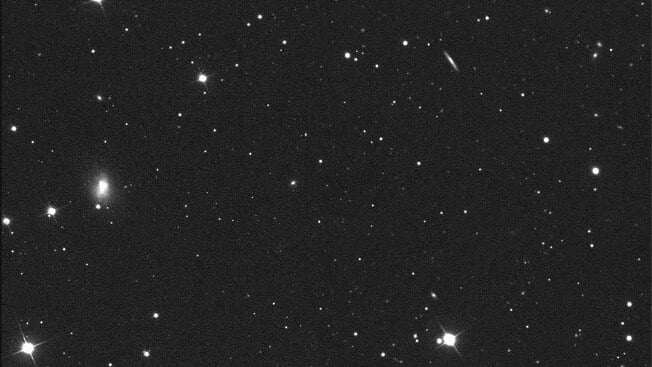A team of astronomy students from the University of Texas has made a significant discovery by identifying a supermassive black hole within the tiny galaxy Segue 1. This dwarf galaxy, located approximately 75,000 light-years from Earth, was previously thought to be primarily composed of dark matter. However, a new study suggests that the majority of its mass is due to an unseen black hole, estimated to weigh over 450,000 solar masses.
The findings emerged from a collaborative course offered by the University of Texas at Austin and its San Antonio campus. Under the guidance of professors Karl Gebhardt and Richard Anantua, students conducted computer simulations as part of their coursework. The aim was to understand the dynamics of Segue 1, which has too few stars to maintain its structure through gravity alone.
Uncovering New Cosmic Insights
Historically, scientists have posited that a dark matter halo encircled Segue 1, providing the gravitational binding necessary to keep it intact. The students divided their research into three groups: one focused on dark matter, another included a hypothetical black hole, and the last examined the stellar population. By isolating the stars predominantly influenced by Segue 1’s gravity, they analyzed their speed and trajectory.
The results were surprising. The group studying the black hole scenario found that the central black hole could account for the rapid orbits of stars near the galaxy’s core. “I did not expect that,” Gebhardt remarked. “We had to write this up.” The team’s findings were published in The Astrophysical Journal Letters in March 2024, with several students credited as co-authors.
Nathaniel Lujan, a graduate student involved in the research, utilized advanced computer modeling techniques acquired from his Galactic and Gravitational Dynamics course. “It’s amazing because Segue 1 is a galaxy we can hardly see, but I’m suggesting that it hosts a half-million solar-mass supermassive black hole in its center,” he stated during a presentation at the American Astronomical Society meeting in Anchorage, Alaska.
Implications for Black Hole Research
The implications of this discovery extend beyond Segue 1. The presence of such a massive black hole in a small galaxy challenges existing theories about galaxy formation and structure. Lujan speculated that Segue 1 may have originally been a larger galaxy that lost gas and star formation capabilities due to interactions with the Milky Way.
Black holes are regions in space where gravity is so intense that nothing can escape, not even light. The first image of a black hole was captured in 2019 by the Event Horizon Telescope, revealing the dark silhouette surrounded by glowing gas. The unexpected mass of the black hole in Segue 1—potentially ten times greater than the total mass of its stars—raises questions about the nature of dwarf galaxies and the role of black holes within them.
The students’ work also opens avenues for further exploration. Lujan intends to focus his doctoral thesis on simulations of other dwarf galaxies previously assumed to be dominated by dark matter. Additionally, researchers have suggested that certain early universe objects, referred to as “little red dots,” may also host supermassive black holes surrounded by minimal star formation.
The findings underscore the importance of revisiting old data with new methods. Karl Gebhardt emphasized this point, noting that discoveries like Segue 1 could provide analogs for understanding the early universe, where massive black holes might have played a pivotal role. “Nature has found a way, regardless of how we’ve thought about building these structures,” he concluded.
As the field of astronomy continues to evolve, this discovery by students not only adds to our understanding of black holes but also illustrates the value of education in fostering scientific inquiry and innovation.


































































